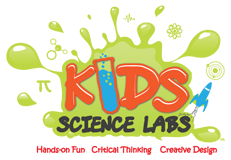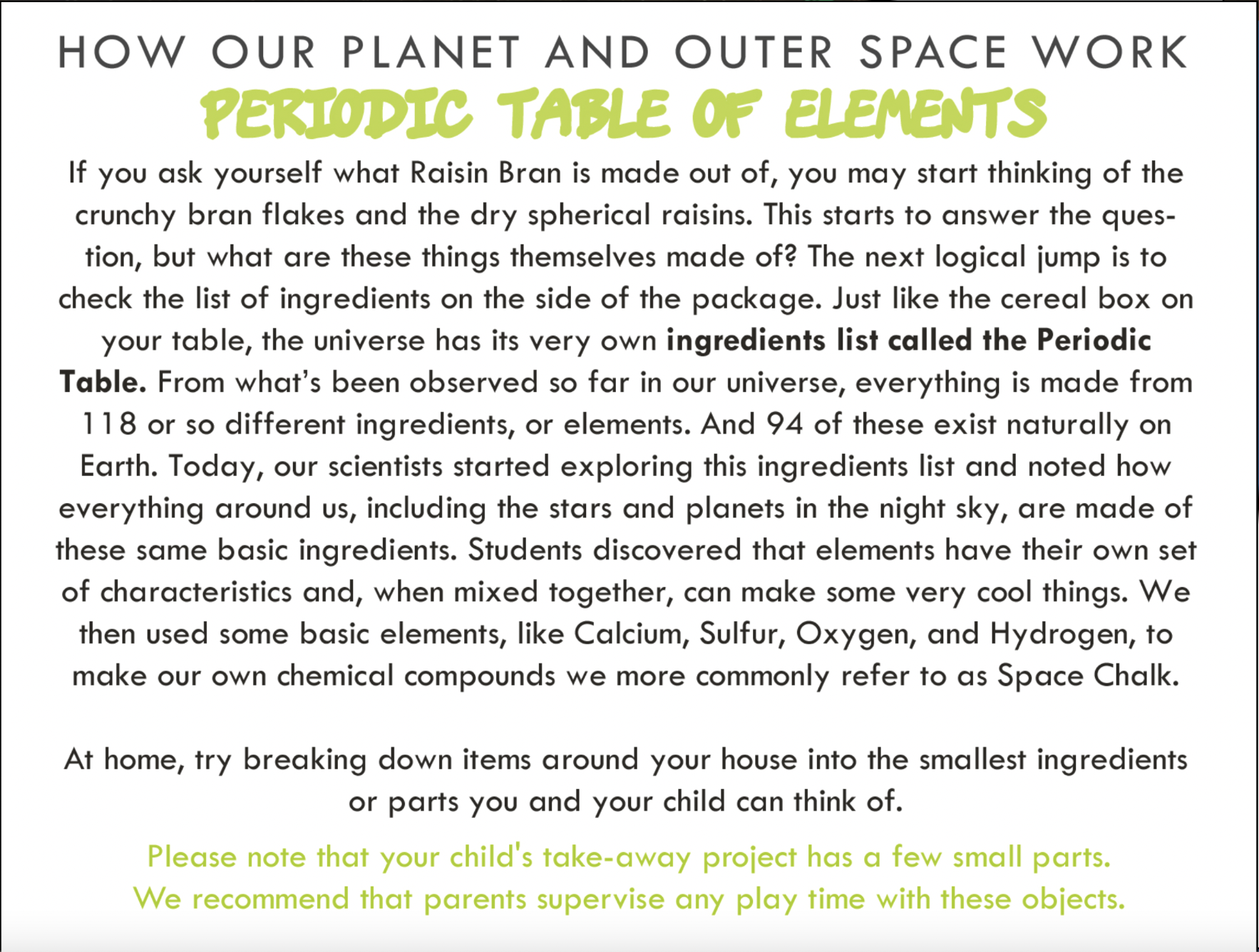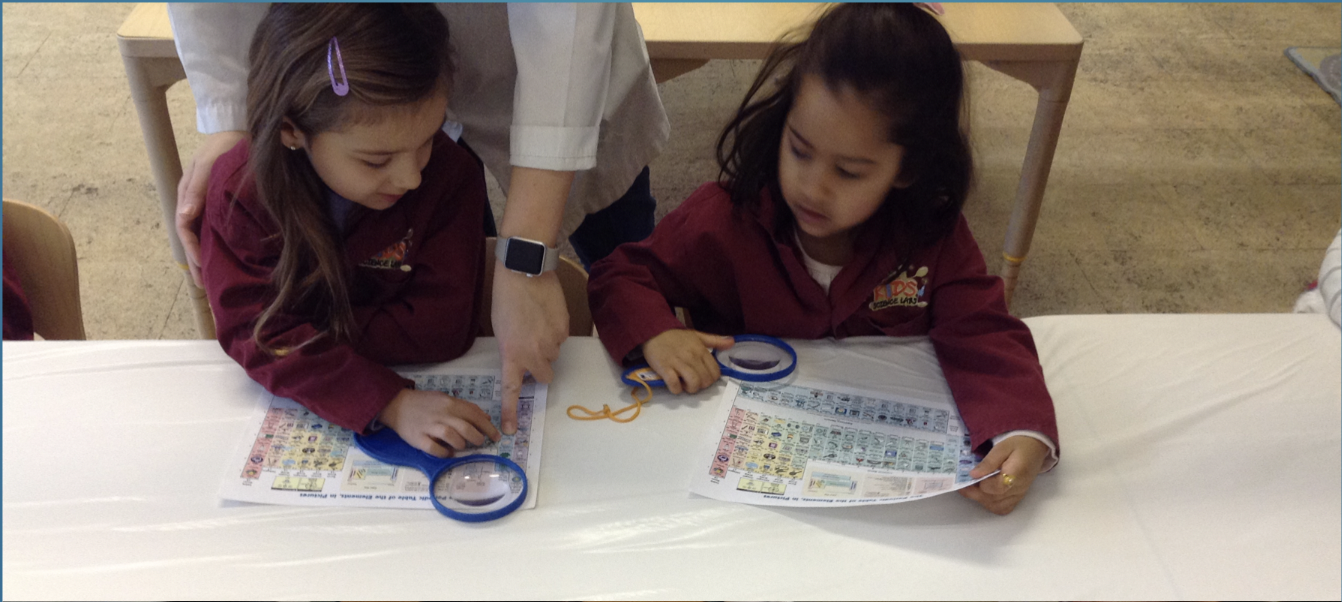Kids learn that everything in the universe is made from the elements in the periodic table.
We discussed the elements that are on the periodic table and used our magnifying glasses to get a better look at them. We took the time to talk about what some elements are used for and where you can find them in your every day life. Students also combined the elements they learned about to make a space chalk that could be made in a variety of ways. Glow in the dark, hard chalk, soft chalk, chalk that might glow under uv rays etc. As ingredients, calcium sulfate is commonly called “plaster of Paris”, and students added elements like aluminum (glitter), strontium aluminate (neon glow powder), and tempera paint/food coloring, to design their own space chalk to their specifications.
Kids learned more about mixing the elements and the chemical compounds they create, like brittle neon space chalk.
Your child likely came home with one or more types of calcium sulfate space chalk and as shown below, some students got the chance to also design some space tools that would have been useful in space travel.





